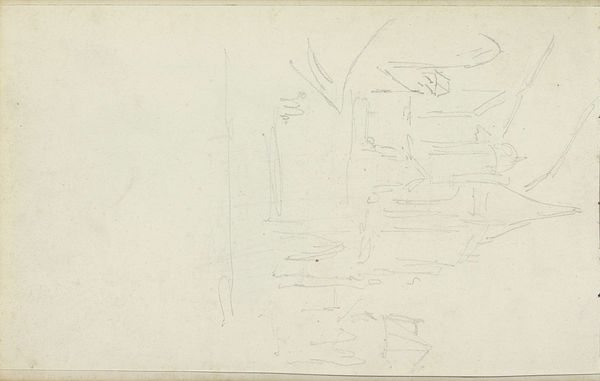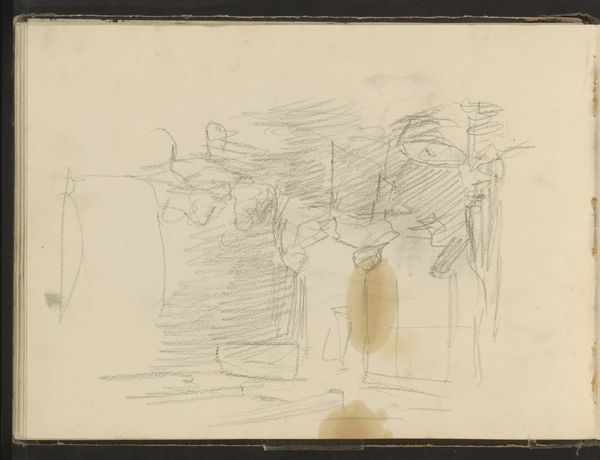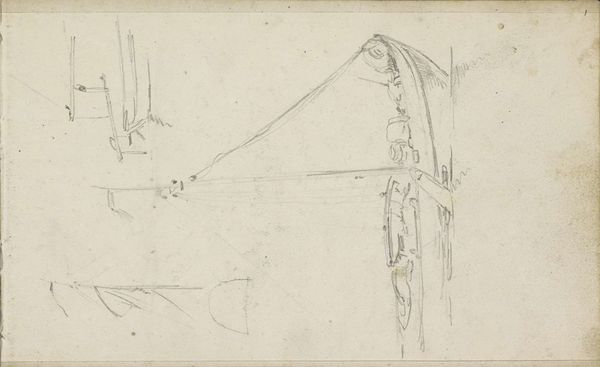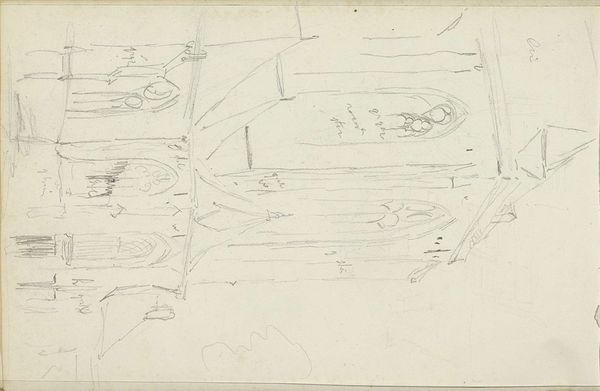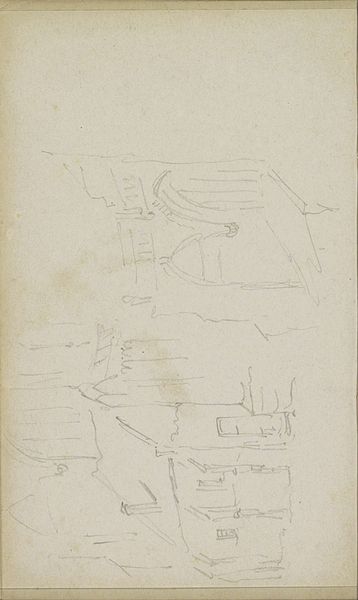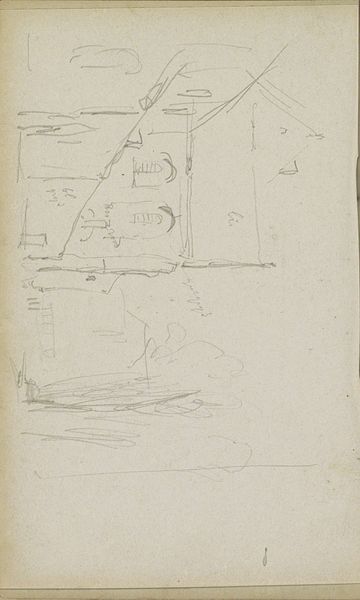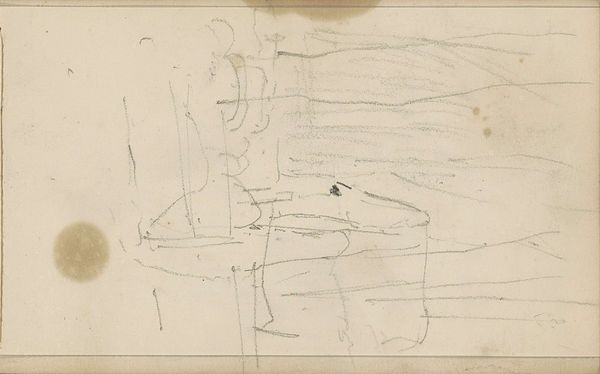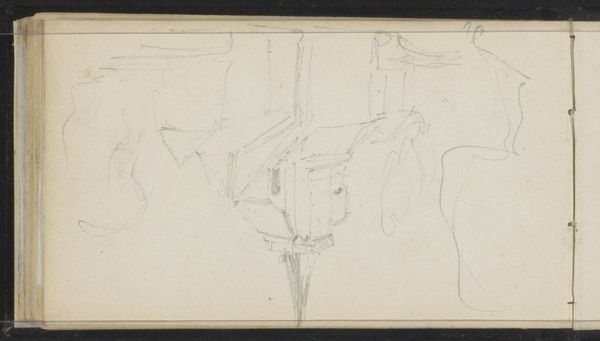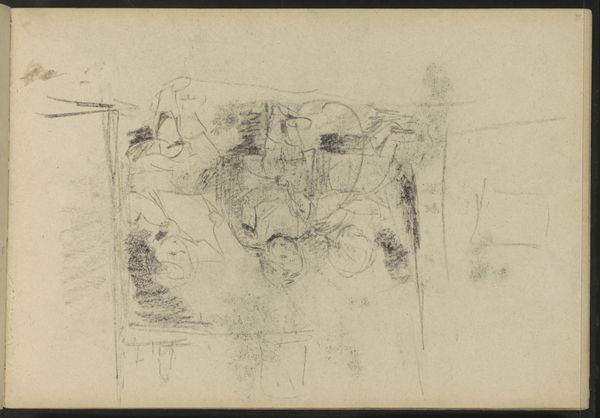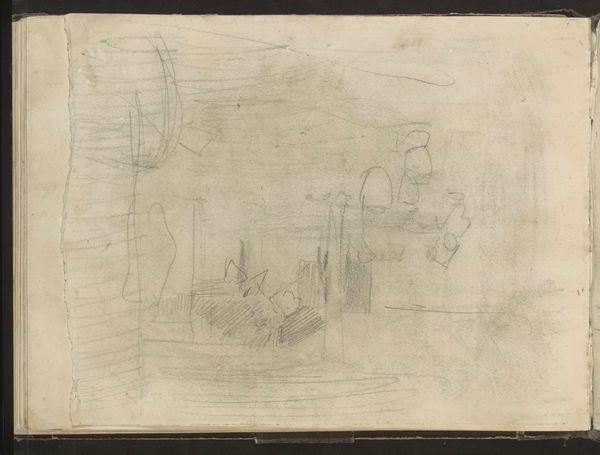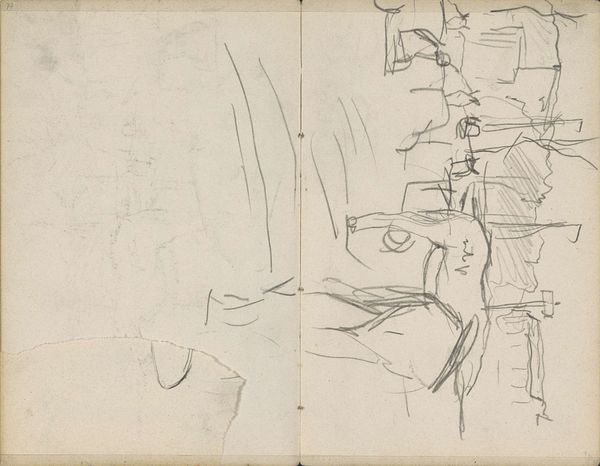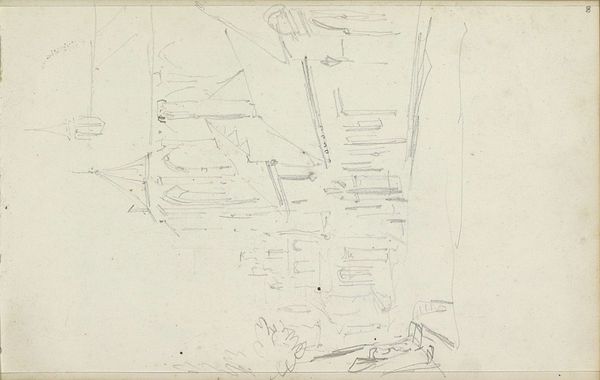
drawing, pencil
#
drawing
#
landscape
#
pencil
#
realism
Copyright: Rijks Museum: Open Domain
Curator: Here we have Adrianus Eversen's pencil drawing, "Gezicht in Kampen, mogelijk met de Bovenkerk," created sometime between 1828 and 1897. Editor: It's fascinating how Eversen has captured the architectural structure with such sparse lines, giving it a feeling of transience, almost like a fleeting memory of a place. Curator: It’s very much in line with Eversen’s other urban landscapes. Think of how the institutional framework shaped these artists to convey a very particular perspective of growing urban centers in the 19th century. He was particularly known for these townscapes, typically very focused on bourgeois city life. Editor: I wonder if the understated nature speaks to his social position. It suggests an intimate, perhaps tentative relationship to the depicted city. There’s an unresolved tension there, the grandeur of the Bovenkerk filtered through, shall we say, a muted gaze? Is this indicative of a dialogue between the artist's self and the towering patriarchal structures of Kampen at the time? Curator: That's interesting. There's the element of what civic role was expected of art during this era. We can analyze how urban imagery in drawings became democratized in the collective imagination as public interest and literacy shifted and how the growing accessibility of affordable drawings transformed how the townscape as a signifier entered political visual debates. Editor: Right, the artwork, whether intentionally or not, can then be interpreted within evolving societal and political debates regarding access and representation. Was the artist simply sketching, or making a broader comment on class and architectural power? What narrative does it propose, intended or unintended, on societal hierarchy and the city itself? Curator: These pencil drawings also gave way to the rise of the merchant art industry. We shouldn't forget the economical implications on what artwork ended up reaching the hands of the average citizens. Editor: It is indeed more nuanced than a single meaning. Ultimately, considering Eversen's landscape today allows us to re-evaluate not just his art but the very socio-political structures within which his images were made and circulated. Curator: Absolutely, a compelling piece indeed!
Comments
No comments
Be the first to comment and join the conversation on the ultimate creative platform.
